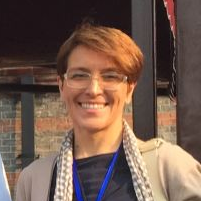Modeling and Simulations for Membrane Processes of Industrial Interest
A special issue of Applied Sciences (ISSN 2076-3417). This special issue belongs to the section "Chemical and Molecular Sciences".
Deadline for manuscript submissions: closed (31 July 2018) | Viewed by 45348
Special Issue Editors
Interests: membrane science and engineering; membranes in artificial organs; integrated membrane processes; membrane preparation and transport phenomena in membranes; membrane distillation and membrane contactors; catalytic membrane and catalytic membrane reactors; desalination of brackish and saline water; salinity-gradient energy fuel cells
Special Issues, Collections and Topics in MDPI journals
Interests: molecular modeling of membranes and membrane operations; modeling of single gas and mixed gas separation; modeling of morphological properties of amorphous glassy membranes; membrane crystallization
Special Issues, Collections and Topics in MDPI journals
Special Issue Information
Dear Colleagues,
The interest for simulation in membrane systems is well-documented, both in terms of transport phenomena, as well as in the study of membrane operations. In the first case, the fundamental comprehension of transport phenomena and the a priori predictions of permeation rates, based on rigorous calculation of the interactions of liquid and gas molecules with several types of membrane materials, have been largely investigated.
In recent years, also due to the rapid growth in digital computation capacity and improvements in simulation algorithms and parallel programming, simulations and modeling have become fundamental tools for proper research development.
This Special Issue of Applied Sciences, "Modeling and Simulations for Membrane Processes of Industrial Interest", will focus on recent progress in the development relating to "traditional" and new membrane processes and aims to cover recent advances in the exploitation of membrane morphology at nanoscale level, transport phenomena, fouling issues, process improvements and applications.
Prof. Dr. Enrico Drioli
Dr. Elena Tocci
Guest Editors
Manuscript Submission Information
Manuscripts should be submitted online at www.mdpi.com by registering and logging in to this website. Once you are registered, click here to go to the submission form. Manuscripts can be submitted until the deadline. All submissions that pass pre-check are peer-reviewed. Accepted papers will be published continuously in the journal (as soon as accepted) and will be listed together on the special issue website. Research articles, review articles as well as short communications are invited. For planned papers, a title and short abstract (about 100 words) can be sent to the Editorial Office for announcement on this website.
Submitted manuscripts should not have been published previously, nor be under consideration for publication elsewhere (except conference proceedings papers). All manuscripts are thoroughly refereed through a single-blind peer-review process. A guide for authors and other relevant information for submission of manuscripts is available on the Instructions for Authors page. Applied Sciences is an international peer-reviewed open access semimonthly journal published by MDPI.
Please visit the Instructions for Authors page before submitting a manuscript. The Article Processing Charge (APC) for publication in this open access journal is 2400 CHF (Swiss Francs). Submitted papers should be well formatted and use good English. Authors may use MDPI's English editing service prior to publication or during author revisions.
Keywords
- membrane morphology at nanoscale level
- transport phenomena
- fouling issues
- process improvements and applications






